Rare Apple IIc PAL Modulator/Adapter Model A2M4023
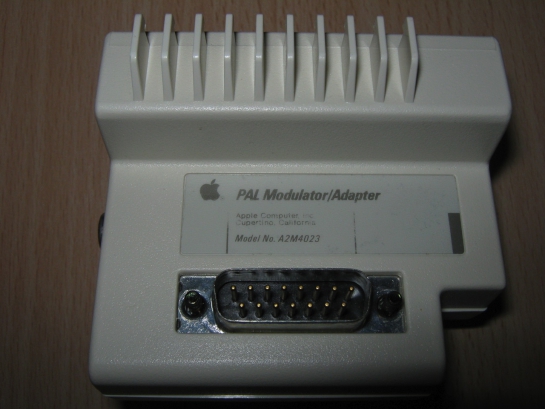
Autopsy:
Rare Apple IIc PAL Modulator/Adapter (RF / Composite Color Output) Model A2M4023.
source: wikipedia

Autopsy:
Rare Apple IIc PAL Modulator/Adapter (RF / Composite Color Output) Model A2M4023.
source: wikipedia
![APPLE ][ Serial Cable & Serial USB Adapter APPLE ][ Serial Cable & Serial USB Adapter](https://www.nightfallcrew.com/wp-content/gallery/cache/1957__545x409_IMG_3870.jpg?76c919)
Foto review of the Serial cable and Transfer program:
ADTPro may be used to transfer Apple diskette/disk images in DOS or ProDOS/SOS format.
The Apple client side happens to run under ProDOS or SOS, but it is perfectly capable of reading or writing Apple DOS (or Pascal, or CP/M, or…) diskettes.
source: adtpro.sourceforge.net
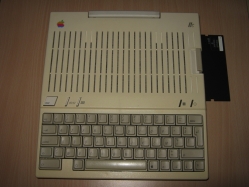
Autopsy:
from Wikipedia:
The Apple IIc, the fourth model in the Apple II series of personal computers, was Apple Computer’s first endeavor to produce a portable computer.
The end result was a luggable 7½ pound notebook-sized version of the Apple II that could easily be transported from place to place. The c in the name stood for compact, referring to the fact it was essentially a complete Apple II computer setup (minus display and power supply) squeezed into a small notebook sized housing.
While sporting a built-in floppy drive and new rear peripheral expansion ports integrated onto the main logic board, it lacked the internal expansion slots and direct motherboard access of earlier Apple IIs, making it a closed system like the Macintosh. However that was the intended direction for this model—a more appliance-like machine, ready to use out of the box, requiring no technical know-how or experience to hook up and therefore attractive to first-time users.
Useful links: Serial Cable Pinout & Apple Disk Transfer ProDOS – Apple 2c FAQ – Apple DOS 3.3 Dump – DOS Serial Transfer
source: wikipedia
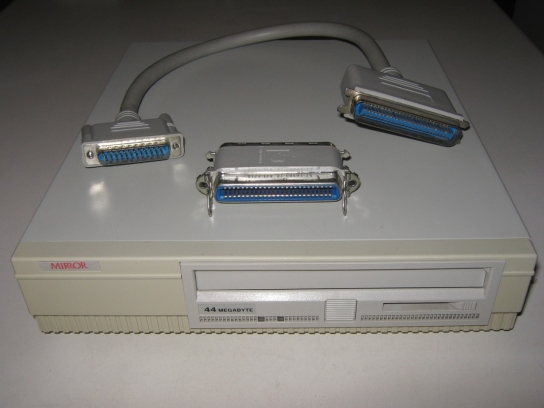
Autopsy:
Many thanks to a friend for the Apple SCSI terminator.
Hints: Macintosh Plus can boot from Cartridges.
from Wikipedia:
SyQuest Technology, Inc., now known as SYQT, Inc., was an early entrant into the removable hard disk market for personal computers. The company was started in 1982 by Syed Iftikar; it was named partially after himself because of a company meeting wherein it was decided that “SyQuest” ought to be a shortened name for “Sy’s Quest”.
Its earliest products were 3.9″ (100mm) removable hard drives, and 3.9″ (100mm) ruggedized hard drives for IBM XT compatibles and military applications. Some of their early fixed drives appear to be rebranded Seagate drives, especially when one compares the drive lists on this data recovery site with this product table. For many years SyQuest held the market, particularly as a method of transferring large desktop publisher documents to printers.
SyQuest aim their products to give personal computer users “endless” hard drive space for data-intensive applications like desktop publishing, Internet information management, pre-press, multimedia, audio, video, digital photography, fast backup, data exchange, archiving, confidential data security and easy portability for the road.
source: wikipedia
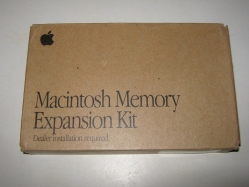
Autopsy:
Memory expansion boards add random access memory (RAM) to your computer system, often increasing the speed, storage, and power of your machine.
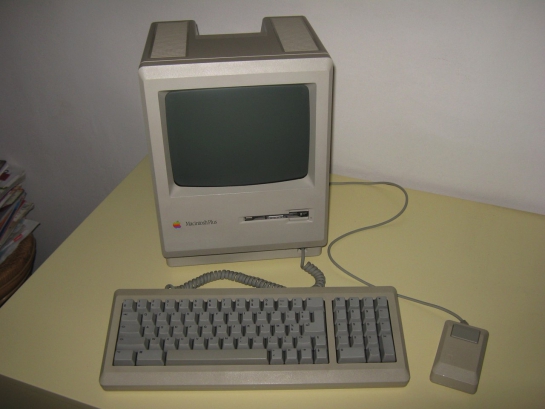
Autopsy:
from Wikipedia:
The Macintosh Plus computer was the third model in the Macintosh line, introduced on January 16, 1986, two years after the original Macintosh and a little more than a year after the Macintosh 512K, with a price tag of 2599 USD. As an evolutionary improvement over the 512K, it introduced RAM expansion from 1 MB to 4 MB, and the SCSI peripheral bus, among smaller improvements. It originally had the same generally beige-colored case as the original Macintosh (“Pantone 453″), but in 1987, the case color was changed to the long-lived, warm gray “Platinum” color.
 Introduced as the Macintosh Plus, it was the first Macintosh model to include a SCSI port, which launched the popularity of external SCSI devices for Macs, including hard disks, tape drives, CD-ROM drives, printers, and even monitors.
Introduced as the Macintosh Plus, it was the first Macintosh model to include a SCSI port, which launched the popularity of external SCSI devices for Macs, including hard disks, tape drives, CD-ROM drives, printers, and even monitors.
Its SCSI implementation was engineered shortly before the initial SCSI spec was finalized and, as such, is not 100% SCSI-compliant. As the Mac Plus had no provision at all for expansion other than the SCSI bus, the entire onus of expansion was on the user.
This usually made it very expensive. SCSI ports remained standard equipment for all Macs until the introduction of the iMac in 1998. The Macintosh Plus was the last classic Mac to have a phone cord-like port on the front of the unit for the keyboard, as well as the DE-9 connector for the mouse; later models would use ADB ports.
source: wikipedia
Recent Comments